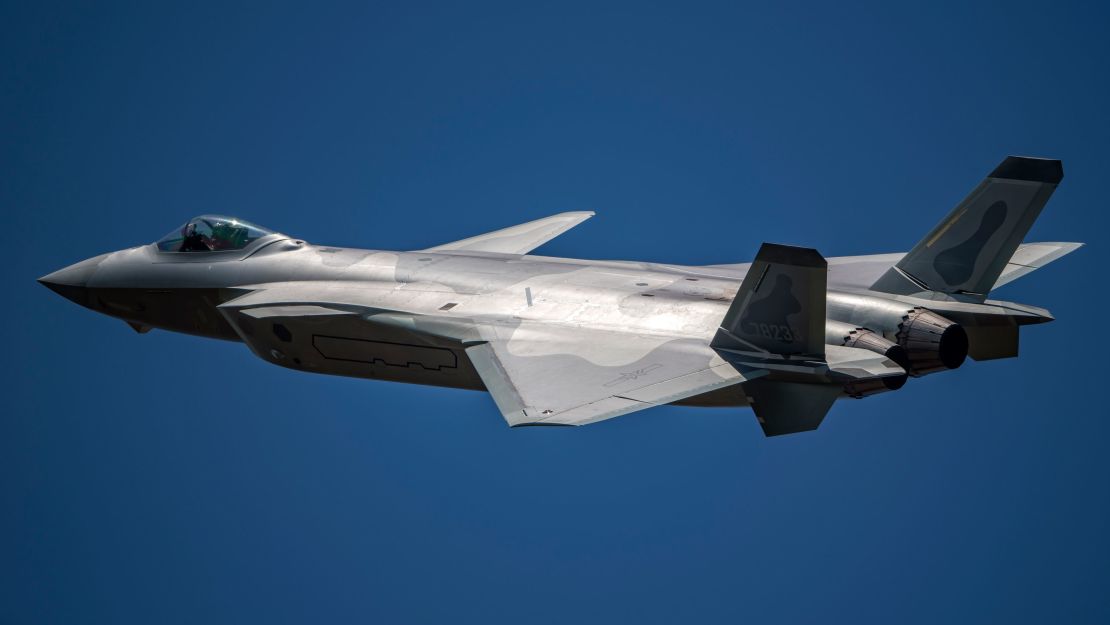Editor’s Note: A version of this story appeared in CNN’s Meanwhile in China newsletter, a three-times-a-week update exploring what you need to know about the country’s rise and how it impacts the world. Sign up here.
Jets screamed across the sky and cannons boomed in northern China on Friday, as 10,000 People’s Liberation Army and Russian troops gave a live-fire finale to a week of military exercises touted by both countries as a new high in bilateral military relations.
The joint exercises were the first of their kind to use a joint command and control system, with Russian troops integrated into Chinese formations, according to a statement by China’s Defense Ministry.
The exercises also provided an opportunity for both sides to test new weaponry, and for Russian troops to use Chinese-made equipment, including armored assault vehicles, for the first time.
The joint drills, which were partially intended to enhance anti-terrorism capabilities, come as the security situation in Afghanistan continues to deteriorate amid the collapse of the US-backed governemnt in Kabul.
But analysts in the West and in Russia have questioned the real military value of the exercises, suggesting Beijing and Moscow likely had differing objectives, from propaganda to economic.
Speaking to CNN, Peter Layton, a fellow at the Griffith Asia Institute in Australia, described the exercises as mostly theater, put on for the media.
Illustrating his point, the exercises, dubbed Zapad Interaction-2021 in Russian or Xibu Unity-2021 in Chinese, dominated Chinese state media last week, with multiple stories, photos and videos from the activities in northern China.
Layton said the exercises seemed highly choreographed, without much opportunity for what he called “free play,” when commanders on the ground have to make crucial decisions in the heat of battle.
“Free play is what hones military skills, not highly choreographed airshow-like events,” Layton said.
Regional cooperation
In recent weeks, Western headlines have been filled with stories of military cooperation among US-allied nations in the Pacific, including a British-led aircraft carrier strike group in the South China Sea and intensive exercises in Australia involving American, Japanese and South Korean units.
But while Beijing doesn’t have the number of allies and partners that Washington does, the drills offered the PLA an opportunity to demonstrate its own ability to work coherently with a regional partner.
However, while both sides have touted their close ties, an actual Russia-China combat alliance doesn’t seem to be in the cards, said Alexander Gabuev, chairman of the Russia in the Asia-Pacific Program at the Carnegie Endowment in Moscow.
“Military cooperation doesn’t imply a need for a defense pact with mutual obligation to go to war if the other party is under attack/wants you to participate in a conflict,” Gabuev wrote in a Twitter thread.

A formal alliance would limit each side’s autonomy, which both highly value, he said. China doesn’t need any obligation to become involved in the Crimea while Russia has no real interest in Taiwan or the South China Sea, Gabuev said.
In the long term, Russia’s motives for enhanced cooperation may be more monetary than military.
Gabuev said in the Twitter thread that Russia sees a “window of opportunity” to sell more arms to China, which, despite its rapid military modernization, still needs Russian technology.
And in training alongside Russian forces, China is buying something else, Gabuev notes, battlefield experience.
For example, the Russian military has been tested in Syria and the Crimea in recent years. Some of that may be imparted to Chinese troops during the joint exercises.
The last time China went to war was during a border conflict with Vietnam in 1979.
New equipment
As the exercise kicked off last Monday, Chinese state media highlighted the appearance of the J-20, the first time the PLA Air Force’s decade old, top-of-the-line aircraft engaged in joint exercises.
The state-run Global Times said the first appearance of the J-20s in joint exercises illustrated enhanced China-Russia military cooperation in the face of security challenges in Asia, as well as “direct threats from the US and its allies.”
The report did not specify the nature of those alleged threats, but the J-20s’ appearance at the China-Russia drills comes just a few weeks after the US Air Force put on its biggest-ever display of stealth fighter power in Asia, sending more than two dozen F-22 Raptor jets to an exercise on the Pacific islands of Guam and Tinian.

When the J-20 first flew a decade ago, China touted it as the answer to American F-22s and F-35s, the world’s premier stealth aircraft. And after the PLA declared it combat-ready in 2018, Chinese military expert Song Zongping, in a post on the PLA’s English-language website, said the J-20 would “engage with rivals in the future who dare to provoke China in the air.”
While the J-20s may have put on a show last week, they won’t be among the warplane contingent China is sending to upcoming International Army Games 2021 in Russia, slated to start August 22.
The state-run Xinhua news agency reports the PLA’s force at those games includes J-10B fighter jets, J-16 fighter jets and Y-20 large transport aircraft, all of which will be making their debut outside of China.
A Global Times report said H-6K bombers will also be in the fleet of 11 PLA aircraft.
Illustrating Gabuev’s point about real combat experience, the Global Times report, citing unnamed Chinese analysts, said their involvement in the competition will allow Chinese troops to make exchanges with other militaries who “have had experience in real combat, serving to further hone in their capabilities to fight in a real war.”




